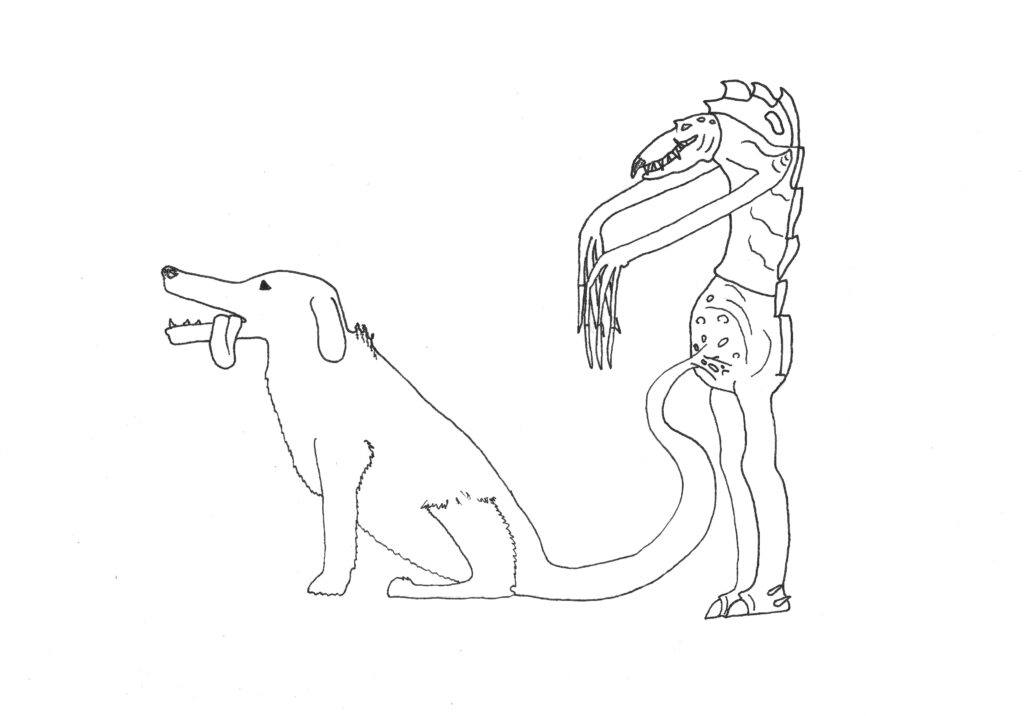
World: Jotunheim
Diet: Meat
Height: 7’3″
Lifespan: 20 years
Habitat: Forests, cities when found in Midgard
Activity Cycle: Diurnal
The food chains of Jotunheim are vast and complicated, stretching from animals as small as those in Midgard to titans of unfathomable size. The smaller predators must be cautious on the hunt, for there are many predators above them. One of these low-level predators is the petten. A mass of flesh grows from its stomach, stretching up to 20 feet away to create a decoy. This mass can be shaped any way the petten wishes, usually resembling smaller prey.
When grabbed, the decoy turns out to be extraordinarily sticky, catching the would-be predator to be drug back into the petten’s grasp. The petten uses its long arms to attack from a range beyond its prey’s, striking with claws laced with a paralyzing venom, then waiting for them to become still before feeding. The decoy lacks blood vessels or organs, and can largely withstand whatever abuse is heaped upon it. However, any portion severed immediately dies, the petten completely losing control over it. If a petten loses most of its decoy in a confrontation, it will immediately retreat. It is slow and shuffling, but the remnants of the decoy remain sticky for several hours, giving it plenty of time to escape.
A petten is a patient hunter, lurking unseen in the massive foliage of its home world for days at a time waiting for prey to come near. It is this combination of traits that makes the individuals who have found themselves in Midgard dangerous. They find it easy to hide in the less populous parts of cities, using decoys resembling domesticated animals to catch incautious children and goblins, hiding their true bodies in alleyways. Several major cities have a small population of petten lurking in their poorest districts, feeding upon whoever they can catch. Thankfully, they find it difficult to establish a breeding population.
They have elaborate mating rituals, with the males loudly bellowing out their strange songs to attract mates, which also make it quite easy for hunters to find them before the females do. After mating, a female’s decoy becomes an egg sack and will be stowed away in a safe environment, releasing 5-8 hatchlings after a few months. Cities with infestations of petten know where to look for these egg sacks, and usually destroy them before new petten are born.
